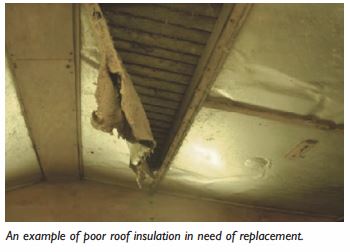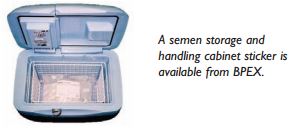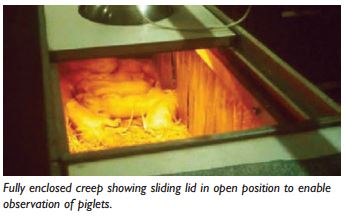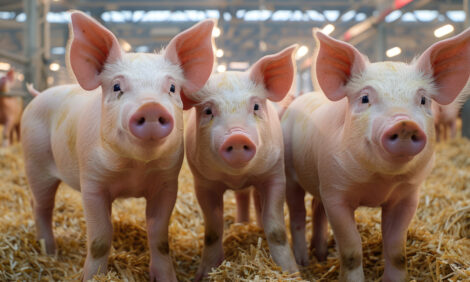



How to Prevent Heat Stress in Indoor Pig Herds
If a pig is under heat stress and cannot cool itself sufficiently it will collapse and, in the worst scenario, die. This guide from AHDB Pork shows how to keep your indoor pigs at a comfortable temperature.Heat stress is caused when a pig's body temperature rises above certain limits; in these circumstances the pig will first increase its respiration rate in an attempt to keep cool.
It will then search for environmental opportunities for cooling, i.e. wallowing, soiling pen and lying in urine.
Heat stress must be avoided in order to prevent unnecessary suffering and reduced productivity; pigs subjected to high temperatures will have reduced growth rates (by up to 50 g/d) and in the breeding herd farrowing rates could decline by as much as 25 per cent, with litter size showing a small drop as well.
Aim to keep pigs within their thermoneutral zone in order to:
- Maintain fertility throughout the year
- Maintain high feed intake and growth rates throughout the summer months
General checklist:
There are a number of ways in which producers can minimise heat stress.
Buildings
- Check roof insulation, it deteriorates with time. Good insulation will give both summer cooling and winter warming benefits to welfare and production.
- If heated creeps are used they should be enclosed and insulated to minimise heat loss into the farrowing house.
- The temperature of creep areas should ideally be controlled and adjusted relative to the age and health of the piglets.
Ventilation
- Ensure that there are enough fans for the size and number of pigs housed; consider using supplementary fans for large pens which are reliant on natural ventilation.
- Clean and maintain fans and carry out regular checks between every batch, or at least quarterly, to ensure that they are working properly.
Alarms and emergency equipment
- Fit and test alarm systems that warn of rising building temperatures.
- Make sure that there is adequate provision for emergencies (e.g. power failure) to prevent unnecessary pain or distress to pigs.
- Check that alarms and generators are in good working order and that all staff are aware of emergency procedures and contingency plans.
Water
- Ensure pigs have access to a supply of cool clean water at all times.
- Make sure that there are sufficient drinkers for the group and that they are all working properly. If in doubt, supply additional water in troughs.
The Defra Code of Recommendations for the Welfare of Livestock states:
Pigs cannot sweat but can keep cool if their skin is damp. Provide areas of wet concrete or misters during hot periods.
Management guidelines
Breeding Herd
Sows
- Where possible serve at either end of the day when it will be cooler.
- Maintain good hygiene, especially where sows have been wallowing, and ensure vulvas are clean pre-insemination. Have hand-washing facilities and/or gloves readily available.
Boars
- Heat stress tends to reduce the libido of boars and can reduce the viability of semen for up to 8 weeks post heat stress.
- Record periods of hot weather on your calendar and remember to check semen quality for up to 8 weeks after the last period of heat stress or ill health.
Temperature control of AI doses is crucial as they can overheat quickly and become unviable. Ensure that doses are kept in an insulated container (16-18°C) until required for insemination and that they are shielded from direct sunlight.
Lactating herd
- Feed sows twice a day and increase to three times a day midway through lactation, the larger meal in the evening. Check trough hygiene at every feed as food can become stale and rancid very quickly during hot periods.
- Check water quality, availability and flow rate during peak demand; the flow rate should be 2 – 2.5 l/minute, if necessary use the feed trough for supplementary water.
- Control supplementary heating in the farrowing house. This should only be necessary for the first 12 hours after farrowing depending on the piglets; if you have dimmers – use them, or replace with lower wattage bulbs.
- Creep areas should be covered and insulated to ensure that heat loss from the creeps does not overheat the sows.
- To help keep sows cool it may be helpful to wet the sows' necks with cool water; however ensure piglets do not get wet.
Dry sow herd
- Heat stress can bring about a deficiency of the hormones needed to support pregnancy.
- Where possible make an area of wet concrete available for sows to lie on.
- Observe the lying area at different times of the day – do not force sows to lie in the sun or on warm straw bedding and provide shade curtains if sunlight is streaming through into the pen.
Grower and finisher herds
- Check water quality and ensure the flow rate is adequate:
- Check that feed is fresh as in warm weather it will become stale very quickly. Consider ordering less feed more frequently, particularly if bulk bins are exposed to direct sunlight.
- Reduce the stocking density where possible so that pigs are able to lie away from each other.
- Use foggers or misters if necessary to cool pigs.
September 2015













